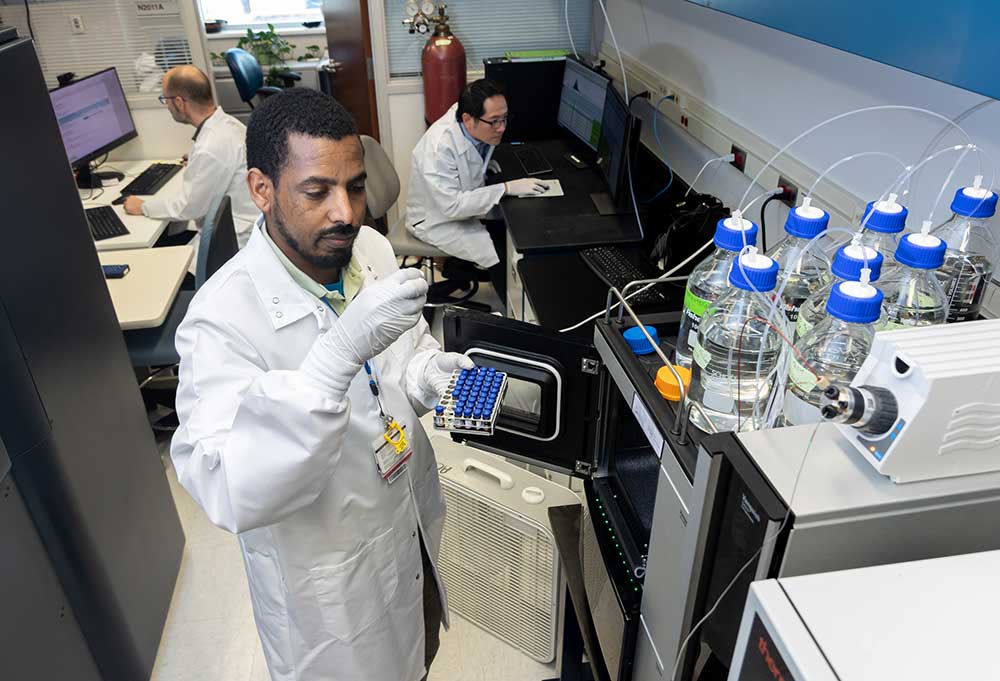GIVE NOW before 2025 ends—your gift will be doubled to help children in need. Click here to 2x your impact!

Ranked nationally in pediatric care.
Arkansas Children's provides right-sized care for your child. U.S. News & World Report has ranked Arkansas Children's in seven specialties for 2025-2026.

It's easier than ever to sign up for MyChart.
Sign up online to quickly and easily manage your child's medical information and connect with us whenever you need.

We're focused on improving child health through exceptional patient care, groundbreaking research, continuing education, and outreach and prevention.

When it comes to your child, every emergency is a big deal.
Our ERs are staffed 24/7 with doctors, nurses and staff who know kids best – all trained to deliver right-sized care for your child in a safe environment.

Arkansas Children's provides right-sized care for your child. U.S. News & World Report has ranked Arkansas Children's in seven specialties for 2025-2026.

Looking for resources for your family?
Find health tips, patient stories, and news you can use to champion children.

Support from the comfort of your home.
Our flu resources and education information help parents and families provide effective care at home.

Children are at the center of everything we do.
We are dedicated to caring for children, allowing us to uniquely shape the landscape of pediatric care in Arkansas.

Transforming discovery to care.
Our researchers are driven by their limitless curiosity to discover new and better ways to make these children better today and healthier tomorrow.

We're focused on improving child health through exceptional patient care, groundbreaking research, continuing education, and outreach and prevention.

Then we're looking for you! Work at a place where you can change lives...including your own.

When you give to Arkansas Children's, you help deliver on our promise of a better today and a healthier tomorrow for the children of Arkansas and beyond

Become a volunteer at Arkansas Children's.
The gift of time is one of the most precious gifts you can give. You can make a difference in the life of a sick child.

Join our Grassroots Organization
Support and participate in this advocacy effort on behalf of Arkansas’ youth and our organization.

Learn How We Transform Discovery to Care
Scientific discoveries lead us to new and better ways to care for children.

Learn How We Transform Discovery to Care
Scientific discoveries lead us to new and better ways to care for children.

Learn How We Transform Discovery to Care
Scientific discoveries lead us to new and better ways to care for children.

Learn How We Transform Discovery to Care
Scientific discoveries lead us to new and better ways to care for children.

Learn How We Transform Discovery to Care
Scientific discoveries lead us to new and better ways to care for children.

Learn How We Transform Discovery to Care
Scientific discoveries lead us to new and better ways to care for children.

When you give to Arkansas Children’s, you help deliver on our promise of a better today and a healthier tomorrow for the children of Arkansas and beyond.

Your volunteer efforts are very important to Arkansas Children's. Consider additional ways to help our patients and families.

Join one of our volunteer groups.
There are many ways to get involved to champion children statewide.

Make a positive impact on children through philanthropy.
The generosity of our supporters allows Arkansas Children's to deliver on our promise of making children better today and a healthier tomorrow.

Read and watch heart-warming, inspirational stories from the patients of Arkansas Children’s.

Hello.

Arkansas Children's Hospital
General Information 501-364-1100
Arkansas Children's Northwest
General Information 479-725-6800

Hemangiomas
What is a hemangioma?
Hemangioma is a benign tumor occurring at birth. It is a bundle of blood vessels, typically on the skin, but it can also be in internal organs. They are separated into two categories, infantile or congenital. Infantile hemangiomas are the most common, growing quickly for the first six months of life. After pausing growth at about six to 10 months, the hemangioma involutes (shrinks) at about a year. Infantile hemangiomas occur in approximately one in 10 children and are the most common vascular anomaly treated at the Vascular Anomalies Center of Excellence. Congenital hemangioma is its maximal size at birth. It may go away quickly, take time to go away or never go away.
Your care team at Arkansas Children’s is experienced in treating hemangiomas, and will work with you to create the best treatment plan for your child. There are two types of hemangiomas.
Infantile hemangiomas have a natural life cycle of growth from birth to 8 months to 1 year of life, followed by gradual involution or regression over several years.
Of the Infantile hemangiomas, there are the following:
- Superficial Infantile hemangiomas are the most common and appear on the surface of the skin
- Deep Infantile hemangiomas grow deeper inside the skin.
- Mixed Infantile hemangiomas grow deep in the skin, but some of the hemangioma also appear on the skin’s surface.
Arkansas Children's was the first to discover and report that infantile hemangiomas have the same molecular markers as placental stem cells, suggesting a possible cause for their development. During pathology testing, these tumors are uniquely stained for "GLUT1," a finding that originated from this research.
Congenital hemangiomas are classified into three types, all of which are present at birth and are at their maximum size:
- Non-involuting congenital hemangioma: This type does not resolve on its own.
- Rapidly involuting congenital hemangioma: This type shrinks quickly during the first year of life.
- Partially involuting congenital hemangioma: This type partially resolves but does not fully disappear.
Additionally, it is important to note that 30% of congenital hemangiomas are associated with pain.

Appointments
New and existing patients can visit our appointment hub for several ways to request an appointment, including online scheduling for many services.
Request an appointmentRelated Content
-
Patient Story
Laser Therapies Help Lessen Faith’s Facial Vascular Anomaly
Learn how state-of-the-art treatments at Arkansas Children's is lessening the redness of Faith's vascular birthmark.
-
Blog
What is a Vascular Birthmark?
Learn more about vascular birthmarks and how Arkansas Children’s specialists are experts in treating simple and complex vascular anomalies.

